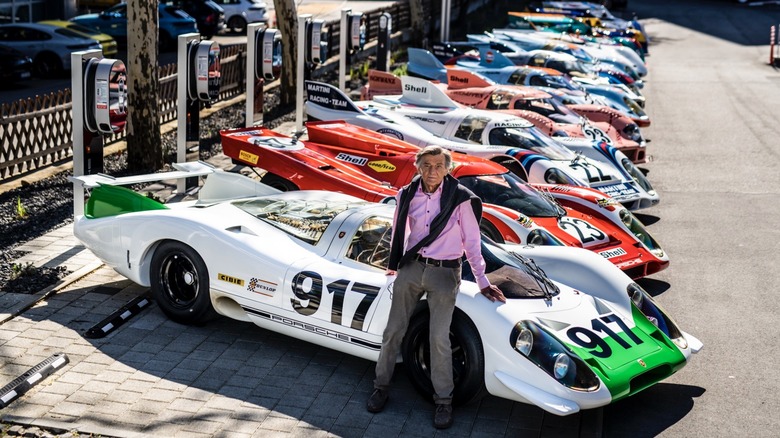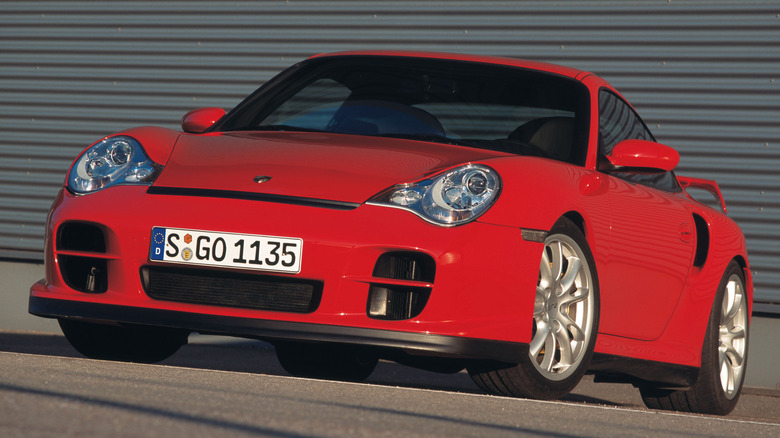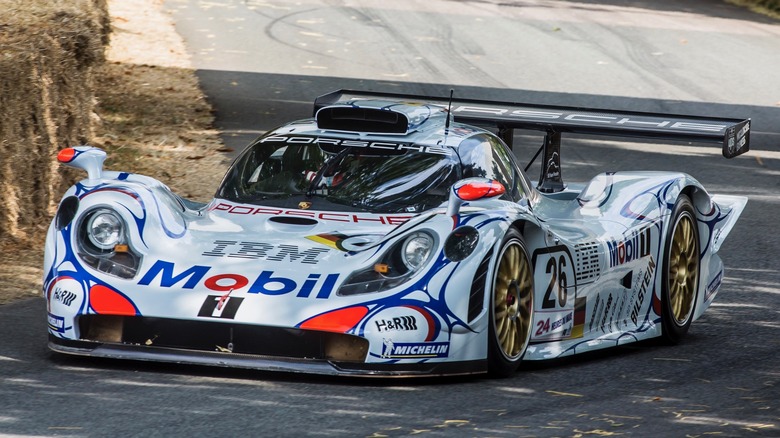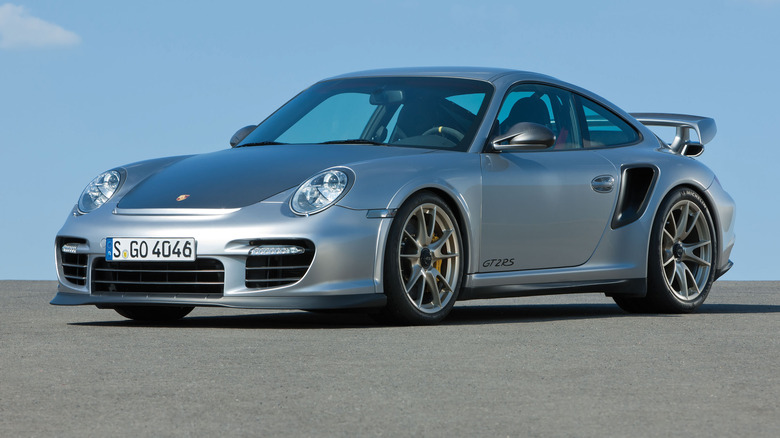Which Porsches Have Mezger Engines And What Makes Them So Special?
Hans Mezger was an engineer who worked for Porsche from the time he graduated from the Stuttgart Technical University in 1956 until his retirement from the company in 1994. He designed numerous Porsche engines during his tenure there, including the original air-cooled flat-six that graced the first 911 and the 914/6 and all of the air-cooled evolutions of that engine for the remainder of the 20th Century. He was also behind the air-cooled flat-12 that powered the Porsche 917 to Le Mans and Can-Am victories as well as the F1-dominating TAG 1.5-Liter V6 Turbo which produced over 1,000 horsepower inside the McLaren MP4/2.
Of course, none of these engines are directly related to the water-cooled Porsche engine known as the Mezger engine, which actually went into production several years after Hans Mezger had retired from Porsche. The Mezger engine was something that Porsche badly needed to solve a very serious issue that had developed with its new water-cooled lineups of Boxsters in 1996 and 911s in 1997 — controversial Porsche models with so-called fried egg headlights. Here's how it accomplished that and what made these powerplants so unique.
The Porsche Mezger engine was born of necessity
The story of the Porsche Mezger engine reaches back into the company's history for a practical solution to a very pressing problem facing the automaker. While developing the type 986 Boxster and the 996 version of the 911, Porsche realized that it could no longer use an air-cooled engine. The company had reached the limits of air cooling in terms of both emissions and power output. A water-cooled flat-six, the M96, was developed for use in these vehicles.
Unfortunately, it was later discovered that the M96 had numerous flaws in its design. The most infamous problem was the potential failure of the sealed bearings for the intermediate shaft, which was in turn used to drive the camshaft chains. Other reliability issues with the M96 engine were leakage in the rear main seal as well as scoring and cracking of the cylinders.
Porsche engineers, whose next task was to develop the higher-powered versions of the 996 (namely the GT2, GT3, and Turbo versions), understandably had little confidence that the already problematic M96 engine would be up to the job. In addition, there would be no time to redesign the engine, as the GT3 model needed to be homologated on schedule. Instead, they reached into their recent past and developed an engine that used the highest-performing and most proven elements of previous Mezger engines to create a new high-output masterpiece.
The Mezger engine was based on a powerful racing unit
The basis for the Mezger engine was the GT1-98 racing engine that powered the iconic 1998 Le Mans-winning Porsche GT1. This engine traced its lineage back to the one used in the Porsche 959, which combined 4-valve, water-cooled cylinder heads with air-cooled cylinders. The Mezger engine incorporated a variety of features that had been previously developed by Hans Mezger, so the engine was named for him. Notably, there were no sealed bearings for the intermediate shaft — instead, it was gear-driven for improved reliability.
The initial version of the Mezger engine debuted in 1999 in the 996 Porsche 911 GT3. It was completely water-cooled, normally aspirated, and had a 3.6-Liter displacement with an output of 355 horsepower. Later versions of the normally-aspirated (NA) 996 Mezger engine reached nearly 400 horsepower, with the twin-turbo Mezger engines used in the 911 Turbo and the 911 GT2 producing between 414 and 476 horsepower.
The Mezger engine continued its run in the 997 version of the 911, which was revealed in 2004. The fried egg headlights had departed, returning the 911 to its normal appearance. The Mezger engine grew to 3.8 liters in 2009 and to 4.0 liters (NA only) in 2012. The 997 Mezger featured an intake cam with higher lift, optimized ports for both intake and exhaust, and a variable intake design that was new. Maximum power outputs were 500 horsepower in the normally-aspirated GT3 RS 4.0 and 612 horsepower in the twin-turbo GT2 RS.
Mezger-engined 911s have become very collectable
The story of the Mezger engine ended with the conclusion of the 997's model line in 2013. It had reached 4.0 liters in displacement with an output of 500 horsepower in its final appearance in the 997 GT3 RS 4.0. This was a doubling of displacement with nearly four times the power output compared to the original 2.0 liter 130 horsepower flat-six in the original 911 introduced in 1963. The Mezger engine was maxed out.
In terms of their values to collectors, there is an interesting dichotomy in the Porsche 996 and 997 market, depending on whether a given example has a Mezger engine or the problematic M96. The Porsche 996s and 997s with Mezger engines have become very desirable to collectors, while the older fried egg 996s bring in lower prices than the 997s. A summary of recent online auction prices demonstrates this. Selecting the most desirable GT2 model as an example shows that Mezger 996 GT2s have been going for between $117,000 and $250,000, while Mezger 997 GT2s have gone for between $159,000 and $776,000.
By comparison, non-Mezger 996s are seen as some of the worst 911s. They are the bargains of the 911 universe and can be found for between $15,500 and $59,000, while non-Mezger 997 911s are a step above them at between $30,000 and $87,000.



